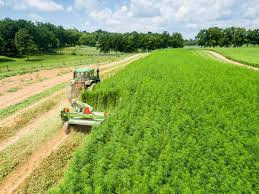Farmers will soon be growing hemp legally in Minnesota thanks to the 2018 Farm Bill, but challenges remain on how the state will implement industrial hemp as an insurance crop.
The state must submit a plan on how it will regulate hemp growth, which needs to include how the state will keep tabs on where hemp is grown, tested and disposed of to insure farmers aren’t growing point strains of marijuana for recreational use.

There are many different varieties of the cannabis plant. Industrial hemp — refers to the non-psychoactive (less than 1% THC) varieties of Cannabis sativa L. Both hemp and marijuana come from the same cannabis species, however, are genetically distinct and are further distinguished by use, chemical makeup, and cultivation methods.
Hemp can be grown as a renewable source for raw materials that can be incorporated into thousands of products. Its seeds and flowers are used in health foods, organic body care, and other nutraceuticals. The fibers and stalks are used in hemp clothing, construction materials, paper, biofuel, plastic composites, and more. Hemp is found commonly in twine and cord, sisal is from ground Agave leaves (that is why sisal baling twine is becoming expensive, because it is control by a few large farming operations in Bazil).
Sadly, all of the raw hemp materials were imported from other countries. Hemp is an attractive rotation crop for farmers. As it grows, hemp breathes in CO2, detoxifies the soil, and prevents soil erosion.
Hemp requires much less water to grow — and no pesticides — so it is much more environmentally friendly than traditional crops.
